-
 Bitcoin
Bitcoin $118100
-0.44% -
 Ethereum
Ethereum $3585
5.43% -
 XRP
XRP $3.434
5.65% -
 Tether USDt
Tether USDt $1.000
0.02% -
 BNB
BNB $743.8
3.89% -
 Solana
Solana $178.7
3.84% -
 USDC
USDC $1.000
0.03% -
 Dogecoin
Dogecoin $0.2381
12.81% -
 TRON
TRON $0.3270
3.62% -
 Cardano
Cardano $0.8315
4.93% -
 Hyperliquid
Hyperliquid $44.51
-4.42% -
 Stellar
Stellar $0.4710
1.52% -
 Sui
Sui $3.896
-2.51% -
 Chainlink
Chainlink $18.09
6.98% -
 Hedera
Hedera $0.2681
9.31% -
 Bitcoin Cash
Bitcoin Cash $516.7
4.83% -
 Avalanche
Avalanche $23.95
6.96% -
 Shiba Inu
Shiba Inu $0.00001490
5.67% -
 UNUS SED LEO
UNUS SED LEO $8.966
0.80% -
 Toncoin
Toncoin $3.294
4.39% -
 Litecoin
Litecoin $105.4
4.69% -
 Polkadot
Polkadot $4.356
5.30% -
 Uniswap
Uniswap $10.29
17.25% -
 Monero
Monero $327.9
-3.04% -
 Bitget Token
Bitget Token $4.942
4.33% -
 Ethena USDe
Ethena USDe $1.001
0.08% -
 Pepe
Pepe $0.00001348
2.17% -
 Dai
Dai $1.000
0.02% -
 Aave
Aave $320.8
0.58% -
 Bittensor
Bittensor $411.8
-4.07%
What does it mean to burn an NFT?
Burning an NFT permanently removes it from circulation by sending it to an unrecoverable address, reducing supply and potentially increasing value for remaining tokens.
Jul 19, 2025 at 01:21 am

Understanding the Concept of Burning an NFT
Burning an NFT refers to the irreversible process of permanently removing a digital asset from circulation by sending it to a non-recoverable wallet address—often referred to as a "black hole" or "burn address." This action is typically executed on a blockchain network, such as Ethereum, Solana, or Binance Smart Chain. Once burned, the NFT becomes inaccessible and cannot be transferred or traded again, effectively reducing its supply in the ecosystem.
The concept of burning assets is not unique to NFTs; it has been used with cryptocurrencies like BNB (Binance Coin) and Ethereum during deflationary events. However, when applied to NFTs, burning serves different purposes, including enhancing scarcity, improving value perception, and managing digital collectibles.
The Technical Process Behind Burning an NFT
To burn an NFT, the owner must interact directly with the smart contract governing that specific token. Here's how the process generally works:
- The user connects their wallet (such as MetaMask or Phantom) to the platform hosting the NFT.
- They locate the Burn function within the NFT’s smart contract or through a dedicated interface provided by the project team.
- After confirming ownership, the user executes the burn transaction.
- The NFT is sent to a predetermined burn address, which is a wallet with no private key associated, making retrieval impossible.
- The blockchain records this action permanently, and the token balance of the original owner decreases by one.
It's important to note that burning an NFT does not delete the data stored on the blockchain; rather, it marks the token as unusable. The metadata and history may still exist, but the token itself can no longer be accessed or moved.
Purposes and Motivations for Burning NFTs
There are several reasons why individuals or projects choose to burn NFTs, each serving a distinct objective:
- Scarcity and Value Appreciation: By reducing the total supply of a particular NFT collection, burning can create artificial scarcity, potentially increasing demand and the floor price.
- Community Engagement: Some projects allow holders to vote on whether to burn certain tokens, fostering a sense of community-driven decision-making.
- Utility Management: In games or metaverse platforms, unused or obsolete items may be burned to maintain balance and relevance within the ecosystem.
- Marketing Strategy: High-profile burns, especially involving rare or valuable NFTs, often generate buzz and media attention, drawing new users to the project.
Each of these motivations aligns with broader trends in the NFT market, where utility, rarity, and engagement play critical roles in determining success.
Implications of Burning an NFT for Holders and Projects
When an NFT is burned, both individual holders and the wider community experience various consequences:
- For Individual Holders: Burning results in the permanent loss of the asset. Therefore, owners must carefully consider the implications before proceeding. It may be done voluntarily or as part of a redemption program offered by the project team.
- For Projects: A well-planned burn event can enhance brand reputation and trust. It signals that the team is committed to long-term value creation and responsible governance.
- Market Impact: Sudden or large-scale burns can influence market dynamics. If perceived positively, they may drive up prices. Conversely, if viewed as manipulative or unnecessary, they could lead to skepticism or sell-offs.
Ultimately, the impact depends on transparency, intent, and execution. Clear communication from the project team is essential to ensure alignment with holder expectations.
How to Verify That an NFT Has Been Burned
Once a burn transaction is completed, it's crucial to verify that the NFT has indeed been removed from circulation. Here's how to do that:
- Use a blockchain explorer compatible with the network where the NFT resides (e.g., Etherscan for Ethereum-based tokens).
- Locate the transaction hash provided after the burn operation.
- Check the destination address to confirm it matches the known burn address associated with the project.
- Review the event logs to ensure the Transfer event reflects a movement to the burn address.
- Confirm that the NFT no longer appears in the owner’s wallet or any secondary marketplace listings.
Verification ensures accountability and helps prevent fraudulent claims about burn events. It also provides reassurance to the community that the project is adhering to its stated policies.
Frequently Asked Questions
Q: Can a burned NFT ever come back into circulation?
No, once an NFT is burned, it cannot be retrieved or reintroduced into circulation. The burn address is designed to be inaccessible, ensuring the permanence of the removal.
Q: Do all NFTs have a burn function built into their smart contracts?
Not necessarily. Whether an NFT supports burning depends on how the smart contract was coded during minting. Some projects include a burn function to manage supply, while others do not.
Q: What happens to the metadata of a burned NFT?
The metadata associated with a burned NFT remains on the blockchain or decentralized storage (like IPFS). While the token itself is unusable, the underlying data persists unless explicitly deleted by the creator.
Q: Is burning NFTs environmentally friendly?
Burning an NFT requires a blockchain transaction, which consumes energy depending on the network. However, compared to minting or transferring NFTs, burning typically involves lower gas fees and minimal environmental impact per transaction.
Disclaimer:info@kdj.com
The information provided is not trading advice. kdj.com does not assume any responsibility for any investments made based on the information provided in this article. Cryptocurrencies are highly volatile and it is highly recommended that you invest with caution after thorough research!
If you believe that the content used on this website infringes your copyright, please contact us immediately (info@kdj.com) and we will delete it promptly.
- Solana, Launchpads, and BONK: Riding the Meme Coin Wave in Style
- 2025-07-19 03:50:12
- Dogwifhat, Pepe, and Altcoin 2025: Meme Coin Mania or Real Utility?
- 2025-07-19 02:50:13
- Bitcoin: From Niche Crypto to Global Asset Dominating Crypto Finance
- 2025-07-19 02:50:13
- Coinbase System Upgrade: What It Means for Your Crypto
- 2025-07-19 02:30:13
- Gold Prices, OTC Tokens, and Mining: A New York Minute on the Golden Rush
- 2025-07-19 03:50:12
- Riding the Crypto Whale: Bitcoin, Altcoins, and the $5 Trillion Dream
- 2025-07-19 02:30:13
Related knowledge
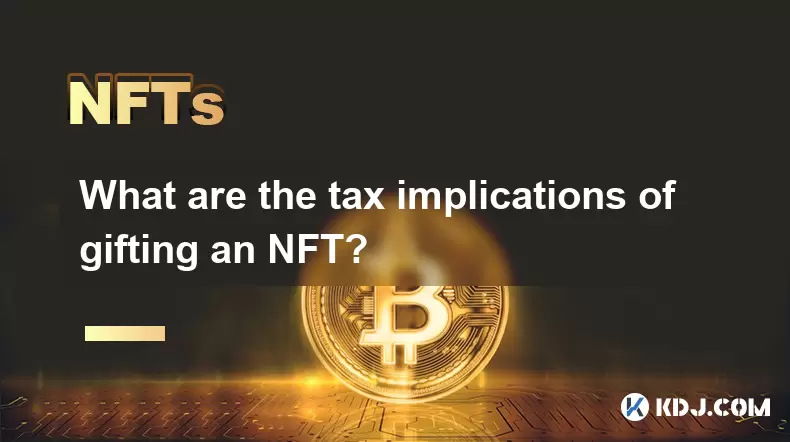
What are the tax implications of gifting an NFT?
Jul 19,2025 at 04:21am
Understanding the Basics of NFT GiftingGifting a Non-Fungible Token (NFT) involves transferring ownership from one individual to another without recei...
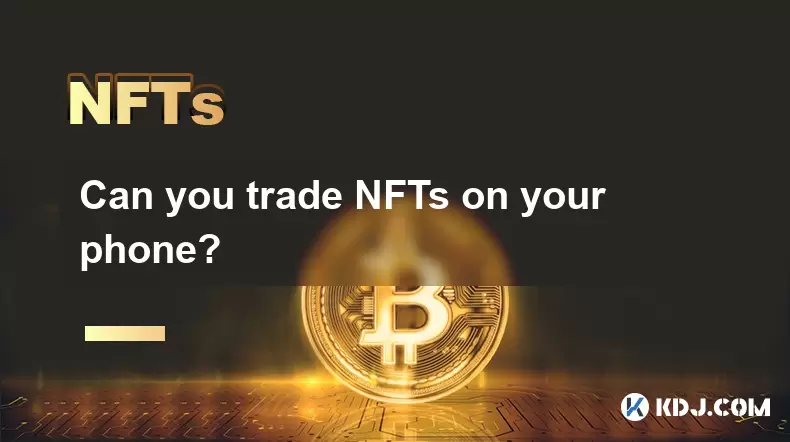
Can you trade NFTs on your phone?
Jul 18,2025 at 04:29am
Trading NFTs on Mobile DevicesYes, you can trade NFTs on your phone, and the process has become increasingly streamlined thanks to a variety of mobile...
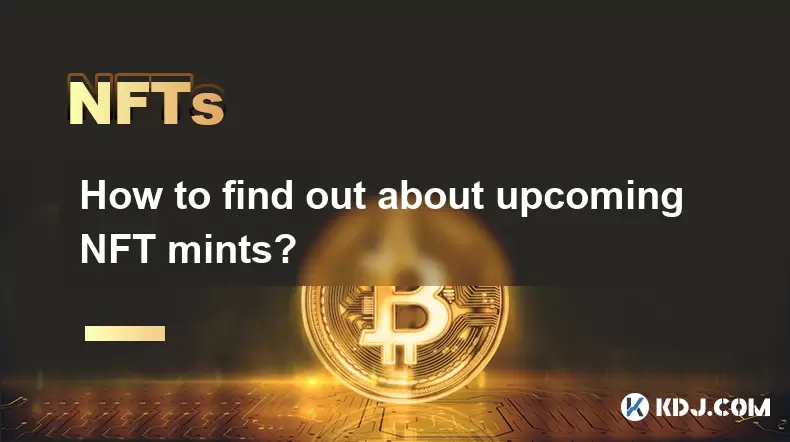
How to find out about upcoming NFT mints?
Jul 18,2025 at 11:50am
Exploring NFT Minting OpportunitiesUnderstanding the landscape of upcoming NFT mints is crucial for collectors, investors, and creators who wish to st...
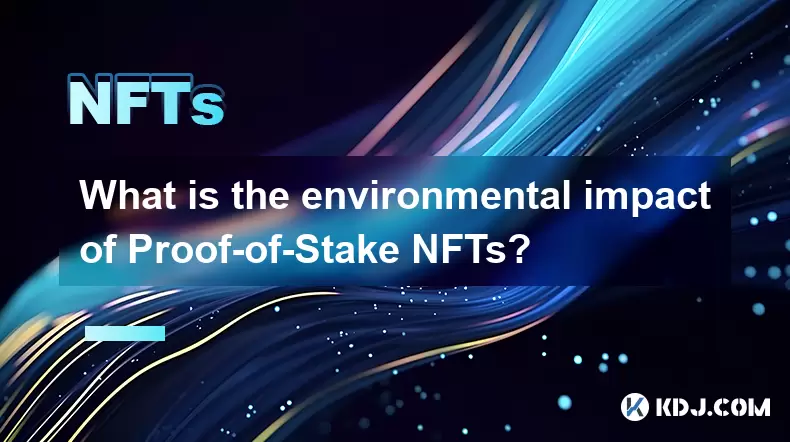
What is the environmental impact of Proof-of-Stake NFTs?
Jul 17,2025 at 07:14pm
Understanding the Basics of Proof-of-Stake NFTsProof-of-Stake (PoS) is a consensus mechanism used by blockchain networks to validate transactions and ...
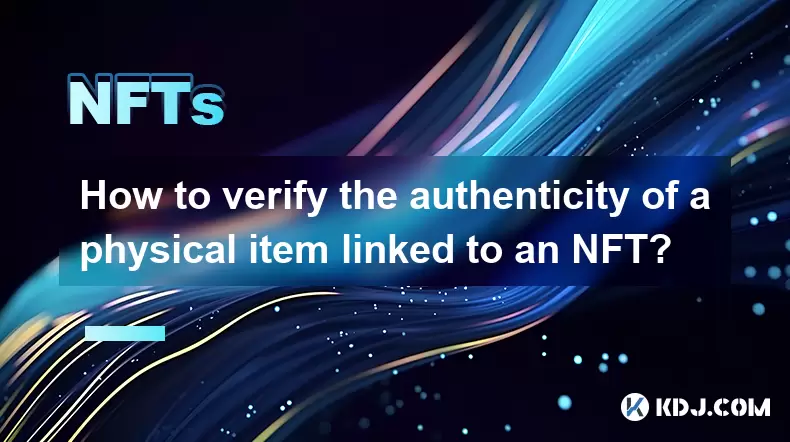
How to verify the authenticity of a physical item linked to an NFT?
Jul 18,2025 at 03:07pm
Understanding the Link Between NFTs and Physical ItemsWhen an NFT is linked to a physical item, it essentially acts as a digital certificate of owners...
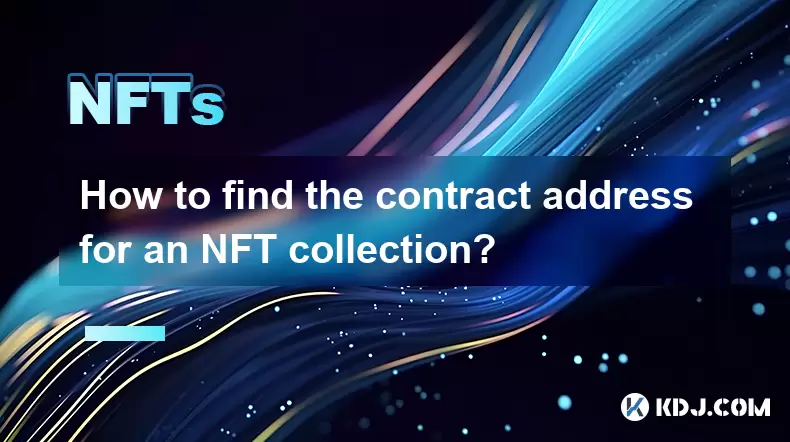
How to find the contract address for an NFT collection?
Jul 18,2025 at 11:56am
Understanding What a Contract Address IsIn the world of non-fungible tokens (NFTs), a contract address is a unique identifier assigned to a smart cont...

What are the tax implications of gifting an NFT?
Jul 19,2025 at 04:21am
Understanding the Basics of NFT GiftingGifting a Non-Fungible Token (NFT) involves transferring ownership from one individual to another without recei...

Can you trade NFTs on your phone?
Jul 18,2025 at 04:29am
Trading NFTs on Mobile DevicesYes, you can trade NFTs on your phone, and the process has become increasingly streamlined thanks to a variety of mobile...

How to find out about upcoming NFT mints?
Jul 18,2025 at 11:50am
Exploring NFT Minting OpportunitiesUnderstanding the landscape of upcoming NFT mints is crucial for collectors, investors, and creators who wish to st...

What is the environmental impact of Proof-of-Stake NFTs?
Jul 17,2025 at 07:14pm
Understanding the Basics of Proof-of-Stake NFTsProof-of-Stake (PoS) is a consensus mechanism used by blockchain networks to validate transactions and ...

How to verify the authenticity of a physical item linked to an NFT?
Jul 18,2025 at 03:07pm
Understanding the Link Between NFTs and Physical ItemsWhen an NFT is linked to a physical item, it essentially acts as a digital certificate of owners...

How to find the contract address for an NFT collection?
Jul 18,2025 at 11:56am
Understanding What a Contract Address IsIn the world of non-fungible tokens (NFTs), a contract address is a unique identifier assigned to a smart cont...
See all articles

























































































